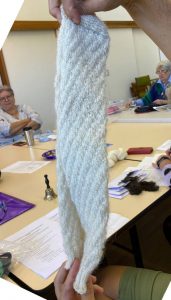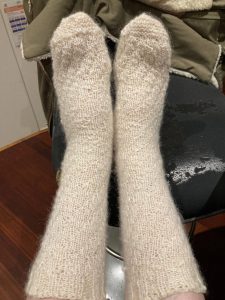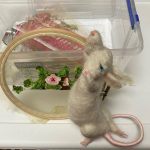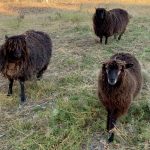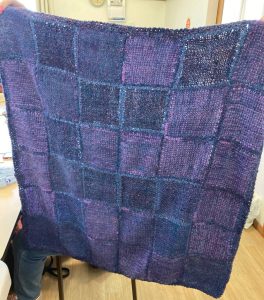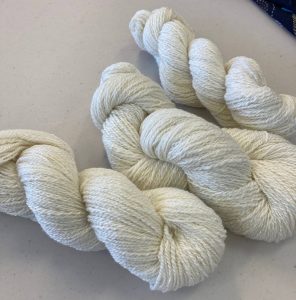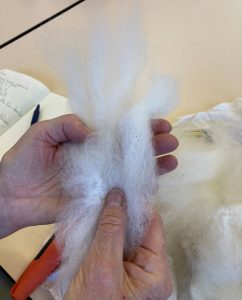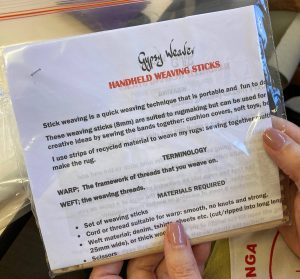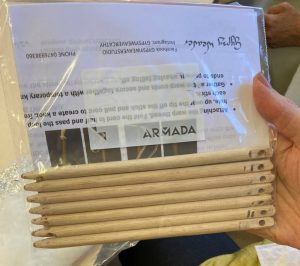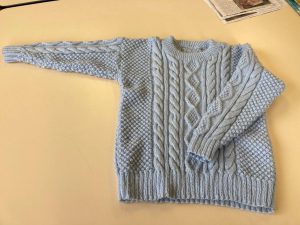
We’re back!
After a somewhat tumultuous couple of years, some semblance of normality is returning to the Guild.
Our regular Wednesday workdays, workshops and meetings are back, and attendance, while still small, is positive and cheerful. Now that masks and QR Code check-ins are a thing of the past, we’ve reverted to our usual sign in sheets. Masks of course remain optional if anyone feels the need!
We have a number of key-holders now, with a roster to make sure someone opens the Guild rooms every Wednesday. Key-holders often advise either through the Guilds Mailing List or Facebook who is opening up, so if you’d like to keep updated make sure you are on the Mailing List and/or monitor our Facebook chat.
Our AGM was held on Wednesday the 13th of April 2022, and we have a new Committee. Thank you to the old and especially new members who put their hands up to help.
With Shows and Events also coming out of hibernation this year should shape up well. Members have already attended some and plans for attending others. It will probably take a while for the big events to return to pre-Covid numbers but it’s a start.
We hope to see as many of you as possible back to our Wednesday Guild mornings – nominally from 10:00am to 12:30. If the key-holder wants to stay later the Guild rooms will remain open till the old 2pm. If Business Meetings are not your thing and you’d like to avoid them, just turn up after 11am on the 2nd Wednesday of the month.
Cheers all,
KathyW, Editor.

Committee 2022 – 2023
President:
Jane Manning
Vice President:
Debbie Carpenter
Minute Officer:
Rhonda Delahoy
Secretary(communications/events):
Julie Hofer
Assistant Secretary:
Amanda Eaton
Treasurer:
Loraine Parker
Assistant Treasurer:
Rhonda Delahoy
Newsletter Editor:
Kathy Wheeler
Library Equipment Officer:
Rhonda Delahoy
Social Media Officer:
Kathy Wheeler
Public Officer:
Julie Hofer
KeyHolders Roster
Wednesday Work Days and Meetings
1st Wed of month – Pam J
2nd Wed of month – Jane or Julie
3rd Wed of month – Heather or Rhonda
4th Wed of month – Loraine
5th Wed of month *IF* there is one – tba
Show & Tell - 13th April 2022
Spiral Ribbed Socks
From Jane:” I used the Up + Down Socks Knitting Pattern as the basis of the sock pattern. It is a good pattern as it can be toe up or cuff down.”
The spiral pattern is
Row 1 *Knit 3 purl 1 repeat from * to end of row
Row 2 same as row 1
Row 3 same as row 1
Row 4 *purl 1 Knit 3 repeat from * to end of row
Row 5 same as row 4
Row 6 same as row 4
Row 7 *k1 p1 k2 repeat from * to end of row
Row 8 same as row 7
Row 9 same as row 7
Row 10 *k2 p1 k1 repeat from * to end of row
Row 11 same as row 10
Row 12 same as row 10
“I used this spiral pattern where the other pattern just had plain knitting.
“You can include the heel from the original pattern if you wish but a spiral pattern allows you not to make a heel.”
Lamb Jumpers
Our fleecy friends give us so much wonderful fiber, so it only seems fitting that when they need help, with a warm coat, we can do something for them!
Lambs’ struggle to regulate their own body temperature when young. If they’ve been orphaned, are from a multiple birth (twins triplets etc) or the weather just suddenly turns really cold, they can suffer from hypothermia. I nearly lost one of my own ewe lambs one year when the mom went off with the stronger twin leaving the weaker girl behind.
Jumpers can provide comfort and warmth to help lambs through difficult times. Acrylic yarn is recommended as the coats will get dirty in the paddock and need to be easily washable. For more information and additional patterns visit:
Lamb Jumpers “Helping Our Farmers” – https://www.facebook.com/lambjumpershelpingourfarmers
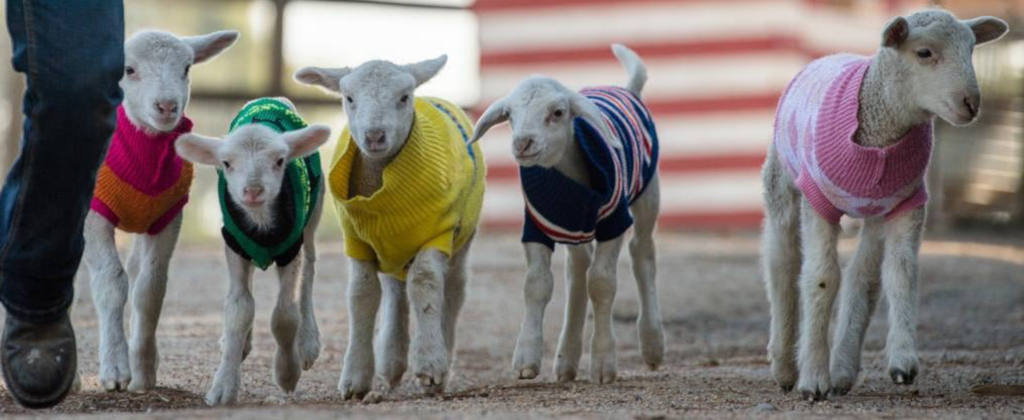
Knitting Pattern
Finished size
To fit Small (Medium, Large)
Gather your supplies
Panda Magnum 8 ply (or acrylic yarn) (100g): 1 ball;
1 pair 4mm knitting needles;
yarn needle
Here’s how
Tension: 22 sts and 30 rows to 10cm over stocking st, using 4mm needles.
Correct tension is not essential for this jumper as all sizes are useful.
Lamb Jumper (begin at lower Back)
Using 4mm needles, cast on 38 (50, 62) sts.
- 1st row: K2, * P2, K2, rep from * to end.
- 2nd row: P2, * K2, P2, rep from * to end.
- Rep last 2 rows 8 (9, 11) times, 18 (20, 24) rows rib in total.
- Work 16 (20, 30) rows stocking st (knit one row, purl one row).
Shape front leg holes
- Cast on 8 (10, 12) sts loosely at beg of next 2 rows … 54 (70, 86) sts.
- Work 18 (20, 24) rows rib as for lower band.
Shape neck
- 1st row: Rib 10 (12, 14), cast off next 34 (46, 58) sts loosely in rib, rib to end.
- 2nd row: Rib 10 (12, 14), turn, cast on 34 (46, 58) sts, turn, rib to end … 54 (70, 86) sts.
Begin front
- Work 18 (20, 24) rows rib.
- Cast off 8 (10, 12) sts loosely at beg of next 2 rows … 38 (50, 62) sts.
- For girl lambs – Work 16 (20, 30) rows stocking st.
- For boy lambs – Work 6 (6, 12) rows stocking st.
- Work 18 (20, 24) rows rib.
Cast off loosely.
To make up
Fold jumper in half at neck opening. Using mattress st, join side seams, noting that for boy lambs there will be 10 (14, 18) rows more on the back than the front. Sew in ends.
Crochet Pattern
Finished size
To fit Small (Medium, Large)
Gather your supplies
Panda Magnum 8 ply (100g): 1 ball;
4.5mm crochet hook;
yarn needle
Here’s how
Tension: 15tr and 9 rows to 10cm over treble fabric, using 4.5mm hook.
Correct tension is not essential for this jumper as all sizes are useful.
NOTE – Australian/UK crochet terminology used throughout.
Special abbreviation
Dec = (yoh, draw up a lp in next st, yoh and draw through 2 lps on hook) twice, yoh and draw through all 3 lps on hook.
Lamb Jumper
Using 4.5mm hook, make 8ch.
Begin neckband
- 1st row: Miss 1ch, 1dc in each of next 7ch.
- 2nd row: 1ch, working in back loop only, 1dc in each dc to end.
- Rep last row 32 (48, 72) times … 34 (50, 74) rows in total.
Turn to work along side edge of rows.
- 1st row: 3ch, miss first row, 1tr in side of each row to end … 34 (50, 74) sts.
- 2nd row: 3ch, 1tr in first tr, 1tr in each tr to last tr, 2tr in last tr … 36 (52, 76) sts.
- Rep last row until there are 40 (64, 96) sts.
Divide for leg holes
- 1st row: 3ch, miss first tr, 1tr in each of next 4 (7, 11) tr, turn.
- Cont on these 5 (8, 12) sts for right front panel.
- 2nd row: 3ch, miss first tr, 1tr in each of next 4 (7, 11) sts.
- Rep last row 1 (3, 5) times, fasten off.
- Miss next 4 (7, 9) tr and join yarn with a sl st in next tr to begin back.
- Next row: 3ch, 1tr in each of next 21 (33, 53) tr, turn.
- Next row: 3ch, miss first tr, 1tr in each of next 21 (33, 53) sts.
- Rep last row 1 (3, 5) times, fasten off.
- Miss next 4 (7, 9) tr and join yarn with a sl st in next tr to begin left front panel.
- 1st row: 3ch, 1tr in each of next 4 (7, 11) tr, turn.
- 2nd row: 3ch, miss first tr, 1tr in each of next 4 (7, 11) sts.
- Rep last row 1 (3, 5) times, do not fasten off.
Join for body
- 1st row: 3ch, miss first tr, 1tr in each of next 4 (7, 11) tr, make 4 (7, 9) ch, work 1tr in each of 22 (34, 54) sts of centre section, make 4 (7, 9) ch, 1tr in each of 5 (8, 12) sts of right front panel … 40 (64, 96) sts.
- 2nd row: 3ch, miss first tr, 1tr in each st to end.
- Rep last row 8 (14, 20) times.
Shape belly
- Next row: Sl st in each of first 7 (10, 15) tr, 3ch, 1tr in each of next 27 (45, 67) tr, turn.
- 2nd row: 3ch, miss first tr, Dec, 1tr in each tr to last 3 sts, Dec, 1tr in last st … 26 (44, 66) sts.
- Rep last row until 20 (32, 48) sts rem.
- Cont without further shaping until jumper measures 30 (44, 60) cm from beg, fasten off.
To make up
Using a flat seam, join neckband and centre front panels. Sew in ends.
Fleecy Follies
As spinners, weavers and felters we often work with natural fibers. Many of these are protein based fibers sourced from various breeds of sheep, alpacas and llamas, and silk worms. These fiber providing animals have their own stories to tell …
Animals, like children, have a knack of getting themselves into mischief. And some are just plain spoiling for trouble.
In late January, I took delivery of 3 new coloured English Leciesters – two wethers and a young ram lamb – Lordie (front in photo) Mattie (middle) and Buddie (top). Their job is to help deal with weed problems in our paddocks by a combination of grazing and fertilizing as they go. Plus the ram lamb is intended to be used over our younger white English Leicester ewes when he’s ready, increasing our flock numbers and hopefully adding some coloured genetics! And off course they grow some wonderful fleece.
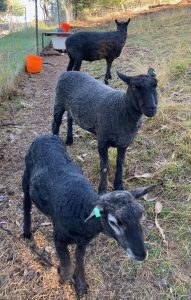
As all new animals must, the new English Leicester boys spent a month in isolation in their own paddock before allowing them to mix with our other animals – in this case a senior alpaca and his younger and annoyingly troublesome paddock companion. The younger trouble-maker was too careless with his own safety to be allowed back into the main male herd, but our senior male is pretty good at keeping him in his place without too much fuss or injury.
Everything went fine for the first two weeks. The sheep were fed in the usual place in their paddock, and the alpacas in their usual (and adjacent) paddock.
Sheep are smart, especially in small flocks. It didn’t take them long to work out that the alpacas were more leisurely eaters, and if they (the sheep) were quick, they could scoff down their own food and go raid the alpacas feeding stations. Every feed they would run from bin to bin until everything was gone, then all three would barrel up the paddock to the top gate, along the transit lane, and run excitedly down to the quietly feeding alpacas, pushing them out of the way as sheep do – the original “wooly-bullies”.
Payback, however, is a b1tch, as the saying goes. My trouble-maker alpaca invented himself a new game – chase the sheep. Even falling over in his haste to try and nip the rapidly retreating backsides of three frightened sheep, he picked himself up and continued the chase. On our steep and rocky terrain this was not going to end well – someone was going to get hurt. So alpacas and sheep had to be separated for everyone’s safety.
Peace has returned again to the paddocks, for the moment.
Do you have a funny or amazing fiber animal story? If you’d like to share it in a future Newsletter contact the Editor.
Honey Spice Sponge Cake
Some of our Members may remember the delicious Honey Spice sponge cake made by Joy and enjoyed at our Meeting back in October 2021. Here is the recipe, including Joy’s optional ingredient suggestion, and a link to the original Women’s Weekly Food article.
- Honey Spice Sponge Cake – Women’s Weekly Food.
The Recipe
- 2 eggs
- ½ cup (110g) castor sugar
- ½ cup (50g) wheaten cornflour (cornstarch) [ I use gluten free cornflour ]
- 1½ tablespoons custard powder
- 1 teaspoon mixed spice
- ½ teaspoon cream of tartar
- ¼ teaspoon bicarbonate of soda (baking soda)
- 1¼ cups (310ml) thickened (heavy) cream (see note)
- 2 tablespoons honey
- 1 tablespoon icing (confectioners’) sugar
- Preheat oven to 180°C/350°F. Grease 25cm x 30cm (10 inch cx 12 inch) swiss roll pan; line base with baking paper (parchment), extending paper 5cm (2 inches) over long sides.
- Beat eggs and ½ cup of the sugar in small bowl with electric mixer about 10 minutes or until thick and creamy.
- Meanwhile, triple-sift cornflour, custard powder, spice, cream of tartar and soda onto baking paper. Sift flour mixture over egg mixture; fold ingredients together. Spread mixture into pan; bake 10 mins.
- Place a piece of baking paper the same size as the pan on bench; sprinkle evenly with remaining sugar. Turn the cake onto the sugared paper; peel lining away. Cool.
- Beat cream and honey in a small bowl with electric mixer until firm peaks form.
- Cut edges from all sides of sponge then cut width-ways into three rectangles. Place one piece of sponge on the plate; spread with half the cream mixture. top with second piece of sponge and remaining cream. Finish with remaining sponge and dust with sifted icing sugar.
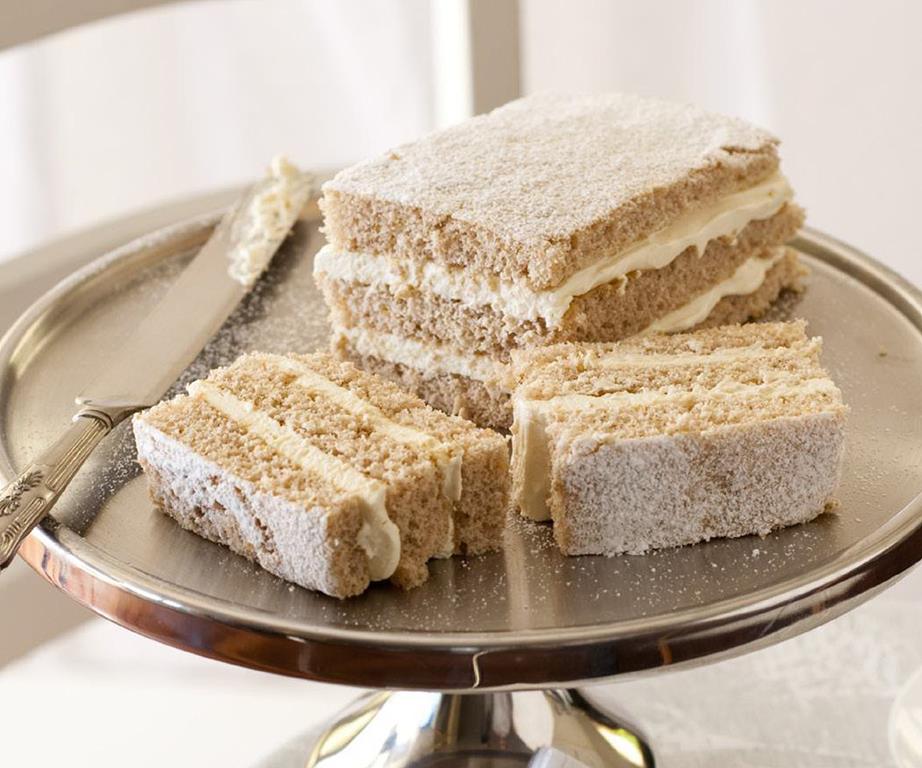
Prep + cook time: 25 mins
Serves: 6
Nutritional count per serving: [as per original recipe, no modifications]
20.1g total fat (12.6 g saturated fat);
1480kJ (354 cal);
39.9g carbohydrate;
3.7g protein;
0.1g fibre
Note: It is fine to use just one 300ml carton of cream for this recipe.
Last words ...
Ok, so we’re now in May already! Time gets away and I’m rusty, but these are our stories from April. I will *try* to get Newsletters out more regularly and in a more timely fashion.
So, if anyone has anything they want to contribute, or requests for articles, email me!
Cheers for now,
KathyW, Ed.

